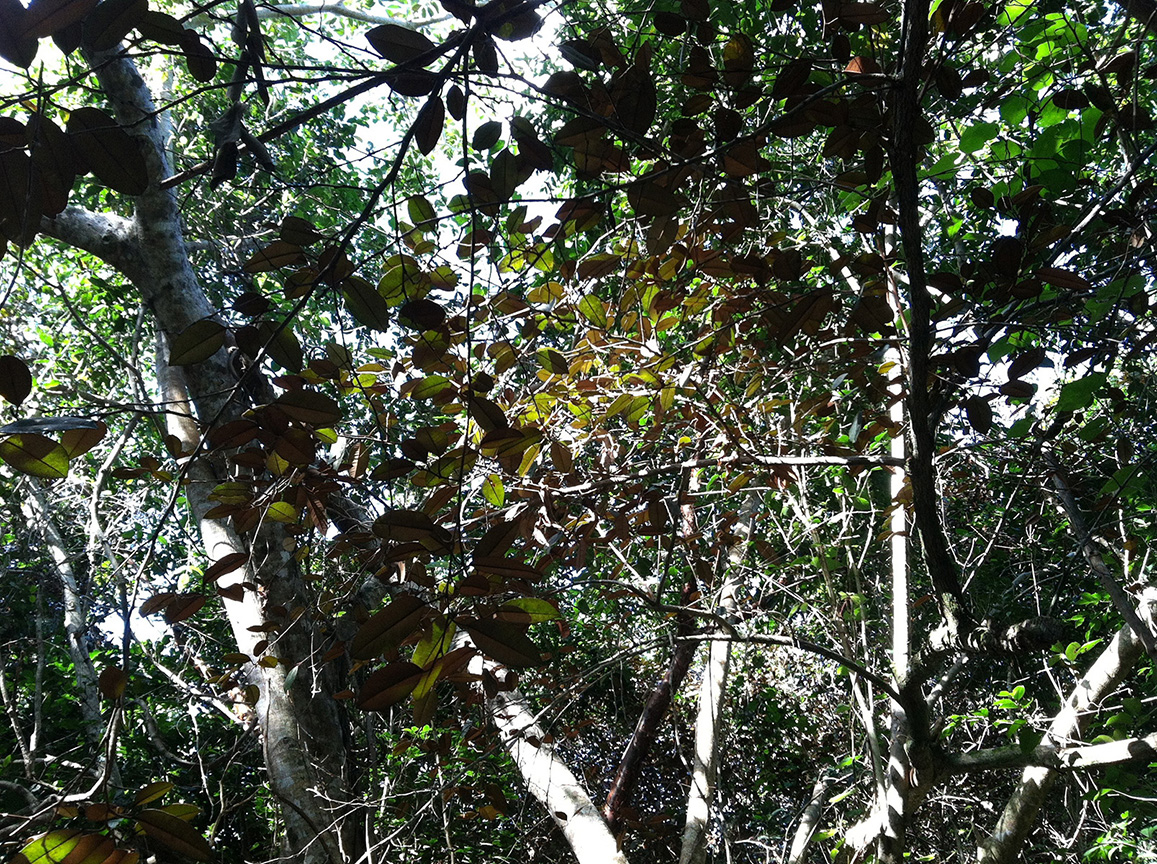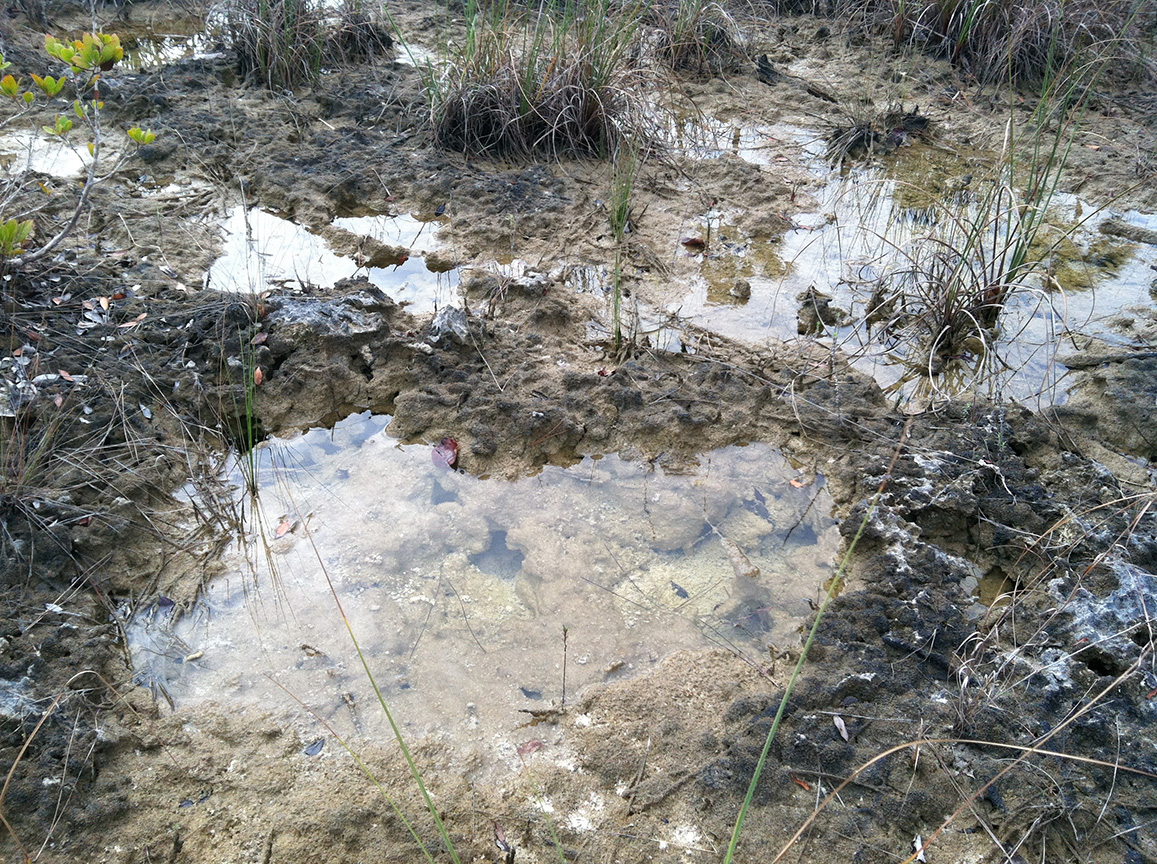
As an artist in residence in the Everglades, painter Elisabeth Condon learns to ‘look small’
Above: Copper leaves in the Everglades. Photo courtesy of Elisabeth Condon.
Painter Elisabeth Condon is a former fellow with Artists in Residence in Everglades, a Knight Arts grantee.
My second day at AIRIE a ranger advised, “look small.” In contrast to an epic landscape such as the Grand Canyon, the subtle shifts of the Everglades’ pine hammocks, sloughs, cypress groves and bay were initially invisible to a newcomer’s eye. Throughout the month of March, each area, shaped and reshaped multiple times by natural and unnatural elements including birds and engineers, revealed itself as a unique ecosystem.
In 1928, John K. Small of the New York Botanical Gardens “made a short excursion into the Cape Sable region,” where he observed that “the rock embankment of the Ingraham Highway in the Everglade prairie southwest of Royal Palm Hammock furnished beautiful examples of the several methods of seed-dispersal—bird, wind, and water.” From such felicitous delivery systems come exciting new hybrids like the Strangler Fig, milkweed and buttonbush. In the Everglades, a millennium becomes a footnote. Noting land above the high-water level of the Everglades populated with woody vegetation, Small imagined “a primeval hammock of kinds of trees now largely or wholly lost to us. After a time fire made inroads in the hammock, just as it does now in other parts of the peninsula. The areas depopulated of broad-leaved trees were repopulated with pine trees just as they are now. Then, when the land subsided, most of the hammock trees and pine trees succumbed to the rising water-table and the floods of the rainy season, and today we have the descendants, direct or indirect, of some of the former broad-leafed trees and needle-leaved trees only on the small reefs of limestone that have not yet been eroded to the general level of the prairie.”

“Pines,” Elisabeth Condon, 2016.
The initiation rite in the Everglades is slogging, or wading in water on limestone rock with slippery overgrowth that reduces motor capacity to infant-level, while minding alligators and snakes. In the shallow mangrove waters behind Mahogany Hammock, National Park Service botanist Jimi Sadle explained how periphytons, the weird and mushy nutritional base for all living forms in the Everglades landscape, contains four to a billion phosphates, the absolute lowest level of nutrient plant life needs to survive. So forests of gray cypress (described by Small as “an ancient type of plant”) preparing to leaf out, mangroves extending knobby limbs, and copper leaves that catch sunlight as they turn are nature’s scrappiest survivors. Slogging Movie Dome, a popular cypress grove with Entymologist Keith D. Waddington, reveals primordial green ferns buttoned with small brown markings and tree snails delicate as watercolor. A trip to Coots Bay in the motorboat with National Park Service hydrologists Steven Tennis and Marcella Cruz enlarged my understanding of the “sedge prairie,” exposing its network of water alleys and bays where crocodiles and alligators live alongside one another and trees used to poison the arrows of Indians still thrive on the water. Whether on foot or boat, one encounters a liquid landscape, infusing the dry and carefully rendered diagrams from the South Florida Collections Management Center with reflective dimension.

A periphyton swamp in the Everglades. Photo courtesy of Elisabeth Condon.
Looking small expands time. Merging natural and invasive species way before concepts of postmodernism or globalism, the Everglades conflate geological time. Despite the violence that has transpired in the Everglades, it is possible to experience the sound of wind soughing through palm trees at Pahayokee as a world gone still. Ink and watercolor gain new significance: watching paper absorb vivid color connects paint to a terrain formed by the movement of water.